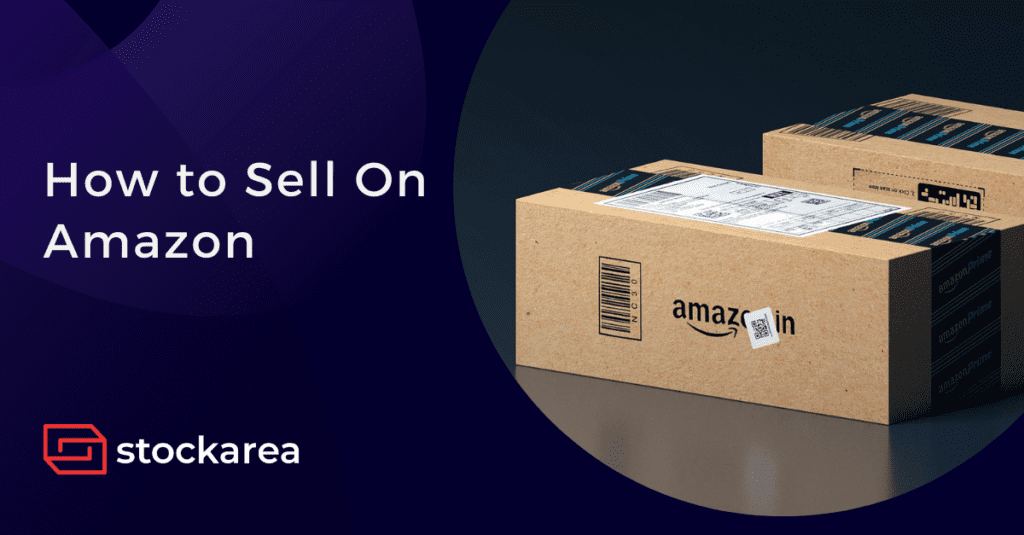Amazon is the world’s largest e-commerce marketplace, with over 350 million active consumers worldwide. You can create an Amazon store with a minimal initial cost and begin selling your products globally. Amazon FBA manages approximately 200 fulfilment centres and enables sellers to pick, pack, and deliver their products efficiently. It’s pretty simple to register on the platform and begin selling on Amazon.
1. Prepare Business Plan
To start selling on Amazon, you must first prepare a business plan to ensure that everything goes correctly. A business plan should include information about your company’s mission, market analysis, products, marketing, sales, and financial projections, among other things. You must conduct market research, monitor trends, familiarise yourself with your competition, and determine the type of products you wish to offer and the amount of money you want to spend on product sourcing, marketing, and promotion. Make a rough schedule of your business’s timetable and pertinent business tasks.
2. Analyze Market
After you’ve tested your business plan, you’ll need to conduct market research to confirm it on the market. Maintain a complete history of competitor sales. Following your competitors’ moves will provide you with a more accurate picture of the recent trends. Another possibility is to interact with multiple suppliers or consumers to ascertain their feelings about the products. Once you’ve established that the market’s sales figures are reliable, you can move forward with your plan.
3. Find Suppliers
The next step is to locate a suitable provider. Numerous B2B platforms can help you find reputable suppliers. Conduct thorough due diligence on their profile, customer reviews, and competition. Additionally, you can meet suppliers at trade exhibitions. Trade exhibitions are an excellent opportunity to communicate briefly with suppliers and familiarise yourself with their products.
Acquaint yourself with the sample products, their prices, the minimum order quantity (MOQ), the order limit, product quality, shipping costs, and their capacity. Understand the various payment option and payment terms of suppliers. Order samples to verify the product’s quality. Before selecting a supplier, inspect the product in person or use experienced quality inspectors.
4. Create Amazon Seller Account
If you do not already have an Amazon seller account, you must first create one. Before you register, ensure that you are equipped with the following:
- Credit card with international charging capability
- Government-issued identification
- Tax-related information
- Phone Number / Email-id
- A bank account
Following that, you must select the appropriate selling plan. Individual members pay $0.99 each time an item is sold. The Professional plan is $39.99 per month, regardless of the number of things you sell. Amazon also earns a referral fee on both programmes, which varies by product category and is calculated as a percentage of the whole transaction.
5. Add Your Products
To begin selling on Amazon, you’ll first need to create a product listing in Seller Central. A product listing contains the following information:
- A product identifier (e.g. GTIN) that uniquely identifies the object.
- A unique identifier (SKU) for tracking your inventory
- Details about the product, such as its name, brand, category, description, and photographs
- Offers and discounts related to your products
- Keywords that will assist purchasers in locating your product
You may use up to 5-7 photographs of the product from various angles and contexts to demonstrate the product’s size, feature, and design. Make it as simple as possible for customers to understand. When displaying product features, always include the most critical information that customers want to know.
6. Start Selling
Once your products are available on Amazon, all that remains is for you to begin selling. Your first sale is a significant achievement—but it is only the beginning of your growth potential as an Amazon seller. You can get a headstart by offering numerous deals and coupons to entice customers. Customer reviews provide insight into your products and how they might be improved. Amazon Seller dashboard provides you with critical performance information for monitoring your business’s progress and assisting you in taking the next step.
Related posts
- What Is An Online Marketplace?
- Complete Guide On Amazon Seller Central
- 7 Pro Tips To Increase Amazon Sales
- What Is Dropshipping?
- 15 Best Online Marketplaces To Sell Your Products In 2024
- 10 Tips On How To Grow Your E-Commerce Business In 2024
- 6 Key Benefits Of Printing Shipping Labels
- Top 10 B2C Marketplaces For Online Shopping
- Omnichannel Fulfillment Vs Multichannel Fulfillment
- Alibaba vs. AliExpress: Which is Better for Business?
- How To Start Ecommerce Business In India
- How to Sell on IndiaMart in 2024
- 10 Key Benefits Of Ecommerce For Your Business
